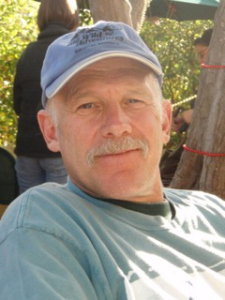By Howie Wolke
 Nobody knows how many species inhabit this lovely green planet, but estimates range from 10 to 30 million. Yet just one of these species, Homo sapiens, now consumes or otherwise utilizes over half of the plant biomass produced each year on Earth, funneling it into an ever-expanding human population plus related support structures and activities.
Nobody knows how many species inhabit this lovely green planet, but estimates range from 10 to 30 million. Yet just one of these species, Homo sapiens, now consumes or otherwise utilizes over half of the plant biomass produced each year on Earth, funneling it into an ever-expanding human population plus related support structures and activities.Nearly 7 billion humans are creating the greatest mass extinction event since the late Cretaceous Era, when an asteroid crashed into the Earth. As the Earth’s human population grows at the rate of about 76 million additional humans per year, we alter the Earth’s climate, deplete its fisheries, pollute its atmosphere, oceans, rivers and soils, and continually carve civilization into its remaining wild habitats. Overpopulation is at the root of nearly all of our problems, yet few work to tame this beast. That includes the U.S. government, which has no population policy.
Here in the United States, we are slowly increasing automotive fuel economy and building better energy efficiency into new structures. Renewable energy industries are growing. Yet in 2010, we spewed out more carbon and methane than ever before. Why? It’s simple. The technological gains are being overwhelmed by population growth (over 300 million and increasing).
Historically, as humanity grows and spreads, true wilderness has been the first thing to go. Forest are cut, soils plowed, prairies and deserts fenced and over-grazed, rivers dammed, and various habitats are dug up and drilled for oil, gas, coal and metals. Also, millions of miles of roads and highways dissect the landscape. And of course, cities and suburbs sprawl across the planet, gobbling up habitat like a hungry teen-ager gobbles up lunch.
In the U.S. south of Alaska, about 9% of our total land area remains in a wild or semi-wild condition; that is, it’s roadless and more or less natural in chunks of 5,000 acres or larger. About 2-½% of the landscape is protected as designated Wilderness. Yet even as the National Wilderness Preservation System grows, the overall amount of wild country shrinks, as unprotected wildlands in the United States and around the globe succumb to the ever-expanding human hoard.
Population growth also lowers our expectations for wild places. As humans experience increasingly crowded and unnatural living conditions, they settle for “wilderness” that’s decreasingly wild. As wilderness becomes less wild, so does the human soul. Daniel Boone probably wouldn’t consider much of today’s wilderness to be very wild. Nor, I suspect, would Teddy Roosevelt. Nowadays, even tiny chunks of degraded wildland – for example, over-grazed areas infested with exotics – are viewed by many as “wilderness”.
In the past, I have referred to this phenomenon of decreasing expectations as “Landscape Amnesia”. As ensuing generations experience less wildness and increasingly unnatural landscapes, they begin to collectively forget what real wilderness and healthy habitats are. So we settle for wilderness that’s less wild than ever before. Designated Wilderness becomes less wild and more impacted by the expanding population’s increasing pressures and demands. It is the inevitable result of population growth.
If you read Wilderness Watcher or the Guardian, you know that overcrowding, overgrazing, motor vehicle incursions, illegal water and other construction projects, predator control, pollution and various attempts to manipulate natural processes plague designated Wilderness, and they increase as population grows.
Obstacles to halting and reversing population growth are formidable. For one thing, the momentum of population growth IS the history of our species, so concurrently we tame, subdue and subjugate wild nature partly because we know no other way.
Many on the political left view jobs and social issues as more important than the environment; they miss the numerous connections to overpopulation. And they oppose the tough immigration policies that could halt continued growth (in the U.S. today, population growth is mostly a function of immigration) in the United States. Meanwhile, the political right worships at big industry’s altar of growth at all cost. In addition, religious fundamentalists of nearly every ilk believe that it is their duty to overwhelm all others with their progeny.
And the environmental movement, at least here in the U.S., remains oddly silent on overpopulation.
The solutions to overpopulation are no secret. Economic policies based upon stability, not perpetual growth, are essential. Better health care and education plus political and economic empowerment of women – especially in poorer countries – are equally important. Family planning services must be integral, safe, and available to all, everywhere. Also, men must assume greater responsibility for their obvious role in population growth. In the United States, immigration must be brought under control. We also need to create tax and other economic incentives for smaller families. But none of this will happen if overpopulation continues to elude the discussion.
Until overpopulation is recognized, the United States and many other nations will continue to fail to develop and implement population policies, and humans will continue to obliterate not just wilderness, but most remaining natural ecosystems on Earth. Oh well, it’s obvious that humans can endure in horribly over-crowded, polluted, denuded and impoverished squalor. That’s proven each day in many corners of the world. The flip side of that problem is that so many other forms of life cannot.
Howie Wolke is a Montana-based wilderness guide/outfitter, board director and former Wilderness Watch President, and long-time advocate for wilderness and other wild habitats.